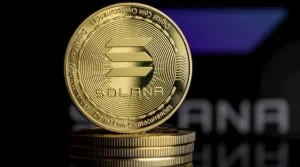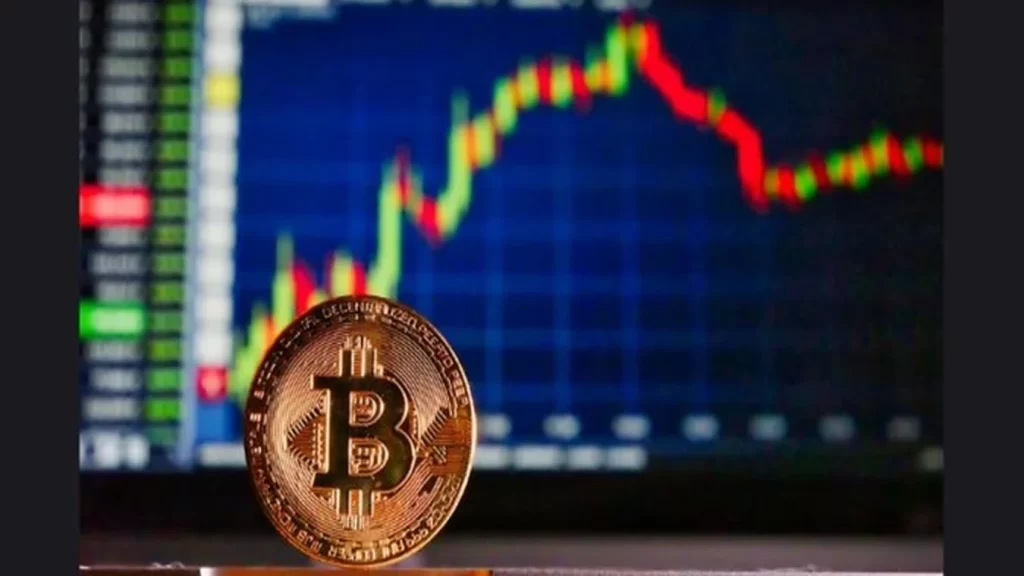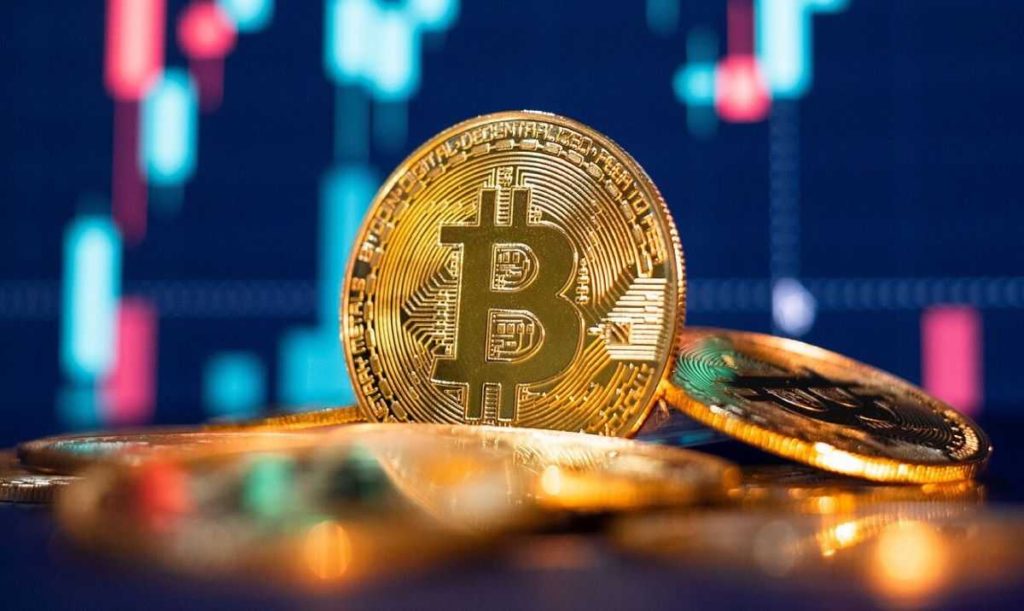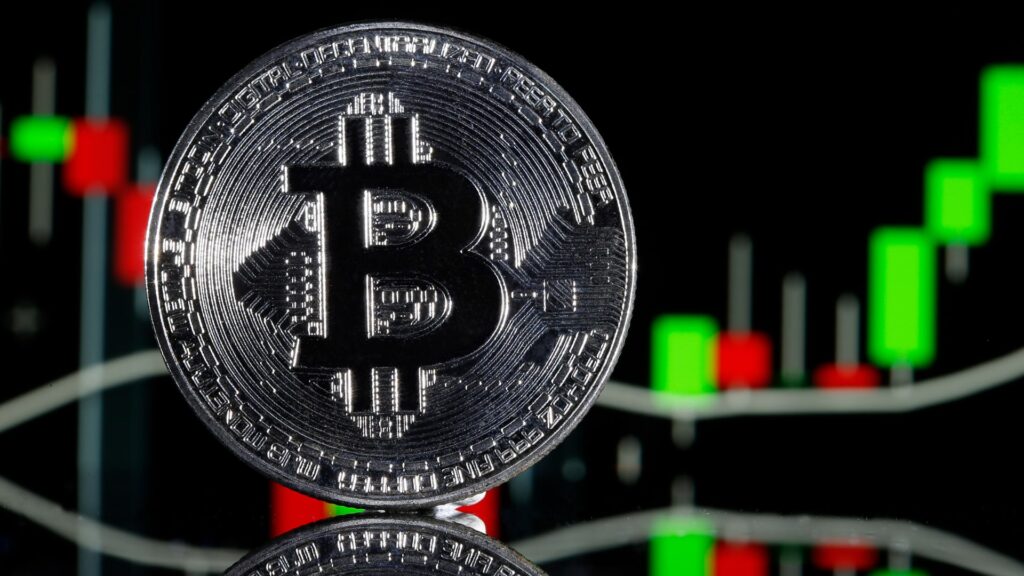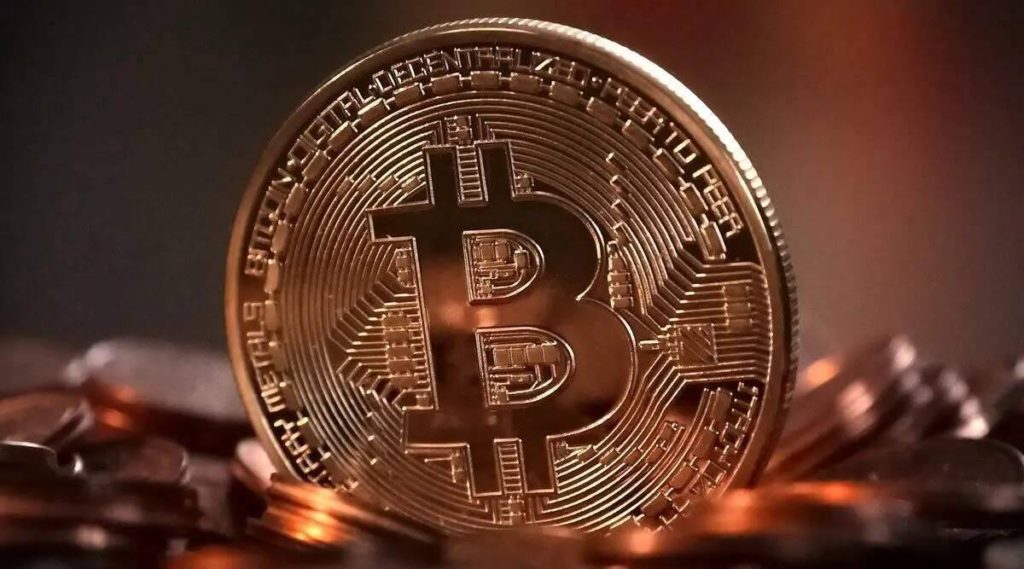The US federal government will only buy Bitcoin as part of its recently announced strategic crypto reserve, a source told Crypto Intelligence News on Tuesday.
Over the weekend, Donald Trump announced via Truth Social that a number of cryptocurrencies, including Bitcoin, Ether, Solana, Cardano and Ripple, would form the US federal government’s crypto reserve.
This attracted criticism from some industry leaders, who believe only Bitcoin – which has been touted as a “digital gold” – should be included in the reserve.
However, a source in Washington has now clarified to Crypto Intelligence News that the federal government will only purchase Bitcoin.
As for the other cryptocurrencies, seized tokens will be added to the reserve, but the government will not actively purchase any XRP, ADA, ETH or SOL, the source explained.
How Market Initially Reacted
The announcement had an immediate impact on the cryptocurrency markets. Bitcoin experienced a surge of over 11%, reaching $94,164, while Ethereum saw a 13% increase, climbing to $2,516. XRP, Solana, and Cardano also reported significant gains, reflecting heightened investor confidence and anticipation of increased institutional adoption.
However, this bullish trend was short-lived. By March 3, 2025, the initial euphoria subsided, leading to a market correction. Bitcoin’s value retraced to approximately $86,000, and similar adjustments were observed across other major cryptocurrencies. This volatility underscores the market’s sensitivity to policy announcements and the inherent fluctuations within the crypto space.
Strategic Implications: Diversifying National Reserves
The creation of the Crypto Strategic Reserve represents a strategic diversification of national assets. Traditionally, reserves have comprised gold, foreign currencies, and other tangible assets. Incorporating cryptocurrencies introduces a new dimension, potentially enhancing the resilience and flexibility of national financial reserves.
Proponents argue that this move could solidify the U.S.’s leadership in digital asset innovation and provide a hedge against traditional market volatilities. Federico Brokate, head of U.S. business at 21Shares, remarked, “This move signals a shift toward active participation in the crypto economy by the U.S. government.”
Criticisms and Concerns
Despite the potential benefits, the initiative has faced criticism from various quarters. Economists like Stephen Cecchetti from Brandeis International Business School have labeled the idea as “absurd,” highlighting the risks associated with the volatility of cryptocurrencies.
There are also concerns about the lack of regulatory oversight in the crypto market, which could pose risks related to financial stability and illicit activities. Critics argue that the reserve might disproportionately benefit existing crypto holders and investors, leading to wealth disparities.
Former U.S. President Donald Trump is preparing to unveil a Bitcoin reserve strategy at an upcoming White House Crypto Summit, signaling a significant shift in the government’s approach to digital assets. The plan aims to integrate Bitcoin into a national reserve, elevating its status in the financial system.
Bitcoin’s Role in the Strategic Reserve
The upcoming summit will provide details on how the proposed Bitcoin reserve will be structured and managed. The plan suggests that Bitcoin will be the primary focus, with other cryptocurrencies potentially playing a role under different classifications.
Commerce Secretary Howard Lutnick today shed light on the administration’s approach, stating, “The President definitely thinks that there’s a Bitcoin strategic reserve.” He further explained that while Bitcoin is central to this initiative, other cryptocurrencies may be treated “differently” but still “favorably”.
“Now there will be the question of, how do we handle the other cryptocurrencies? And I think the model is going to be announced on Friday when we do that.”
Trump’s Vision for Crypto Leadership
Trump has been vocal about his intentions to make the United States a global leader in cryptocurrency. He recently emphasized that previous regulatory actions had hindered the industry, promising that his administration would correct past mistakes and promote crypto-friendly policies.
His statement, “A U.S. Crypto Reserve will elevate this critical industry after years of corrupt attacks by the Biden Administration,” has further fueled speculation about how the reserve will be funded and managed. Trump also declared, “I will make sure the U.S. is the Crypto Capital of the World. We are MAKING AMERICA GREAT AGAIN!”
The White House Crypto Summit: What to Expect
The summit, hosted by key figures in the finance and tech sectors, will focus on cryptocurrency regulation, financial security, and market opportunities. The event will highlight how Bitcoin can play a role in economic stability and long-term investment strategies.
The discussion will likely include plans to encourage institutional investment in Bitcoin, potential tax incentives for crypto holders, and regulatory frameworks that would facilitate its integration into the national economy.
Market Reactions and Future Outlook
The announcement of a Bitcoin reserve strategy has generated enthusiasm in the crypto market, with many investors seeing it as a legitimization of digital assets at the federal level. However, skeptics caution that without clear regulations, the plan could lead to increased volatility or speculative trading.
The summit will determine the extent of the government’s commitment to Bitcoin and what policy changes could emerge from this new approach. If implemented effectively, it could reshape the global perception of cryptocurrency as a government-backed asset.
Bitcoin has long been considered a hedge against economic instability, often referred to as “digital gold.” However, recent market movements have put this perception into question as Bitcoin’s price has seen a sharp decline while traditional safe-haven assets like gold have surged.
Bitcoin’s Decline Amid Global Market Tensions
The recent downturn in Bitcoin’s price coincided with increasing economic uncertainty. With global financial markets reacting to policy shifts and trade disruptions, investors have flocked to assets traditionally viewed as safe havens. This shift has left Bitcoin struggling to maintain its value, with a significant price drop occurring in a short span of time.
Gold Surges While Bitcoin Faces Volatility
As Bitcoin’s value plummeted, gold has reached new highs, reinforcing its status as a preferred store of value during times of uncertainty. This stark contrast in performance has fueled debate over whether Bitcoin can truly hold its place as a safe-haven asset or if it remains a high-risk, speculative investment.
Metaplanet, an investment firm known for its aggressive Bitcoin strategy, has significantly increased its holdings, acquiring more Bitcoin as part of its long-term financial plan. At the same time, the company is evaluating the possibility of listing its shares on stock exchanges outside its home country, in an effort to attract international investors.
The latest Bitcoin purchase strengthens Metaplanet’s position as a major institutional holder of digital assets. The company sees Bitcoin as a key asset in its portfolio, with long-term growth potential.
Adding More Bitcoin to Its Balance Sheet
Metaplanet recently added another 156 Bitcoin to its reserves, worth over $13 million at the time of purchase. This brings the company’s total Bitcoin holdings to 2,391 BTC, reinforcing its strategy of using Bitcoin as a hedge against economic uncertainty.
The firm has consistently increased its Bitcoin exposure, aligning with its belief that the digital asset will continue to appreciate over time.
Exploring a U.S. Stock Exchange Listing
Beyond accumulating more Bitcoin, Metaplanet is also looking to expand its presence by listing its shares on international stock exchanges, including in the U.S. This move could provide access to a broader investor base and increase liquidity for the company’s stock.
Company executives have already held discussions with major U.S. exchanges to explore the feasibility of such a listing. The potential listing would mark a significant step in positioning Metaplanet as a global investment firm with a focus on digital assets.
Surging Stock Performance
Metaplanet’s stock has seen notable growth, reflecting increased investor interest in its Bitcoin-focused strategy. Since it began trading on a U.S.-based over-the-counter market, the firm’s shares have steadily climbed, fueled by its expanding Bitcoin holdings and the broader market rally.
Conclusion
With its growing Bitcoin reserves and ambitions to list internationally, Metaplanet continues to push forward as a key institutional player in the crypto space. Its strategic moves signal confidence in Bitcoin’s future and an effort to expand its global footprint in the investment world.
A cryptocurrency trader has reportedly made nearly $7 million in profits following a major government announcement related to digital assets. By placing large leveraged bets just before the news broke, the trader was able to capitalize on the sudden surge in market prices.
The timing of the trades has raised speculation about whether the trader had prior knowledge of the announcement. Regardless, the massive gains highlight the volatility of the crypto market and the potential for major profits when traders make the right moves at the right time.
Using High Leverage for Maximum Gains
The trader, who has been identified as a major player in the market, deposited nearly $6 million into a derivatives exchange and used 50x leverage to open long positions on Bitcoin and Ethereum. This aggressive trading strategy allowed them to control a position worth around $200 million.
With such a high level of leverage, even a small price movement in their favor resulted in massive returns. However, this approach also carried significant risk—had the market moved in the opposite direction, the losses could have been catastrophic.
Government Announcement Sparks Market Surge
The market movement that fueled the trader’s gains came shortly after a policy announcement confirming the creation of a U.S. Crypto Strategic Reserve. The announcement caused a rapid increase in the price of Bitcoin, Ethereum, and several other major cryptocurrencies.
- Bitcoin surged over 11%, reaching a high of $95,000.
- Ethereum climbed by 14%, hitting $2,541.
- Other digital assets, including Solana, XRP, and Cardano, also saw strong gains.
The trader placed their first major bet less than an hour before the official announcement, leading to speculation about whether they had inside knowledge of the upcoming news.
Questions Around Possible Insider Trading
Given the precision of the trades and their proximity to the announcement, questions have emerged about whether insider trading played a role. While there is no concrete evidence, such situations often lead to scrutiny from regulators and exchanges.
With crypto markets still lacking the strict oversight found in traditional financial markets, cases like this highlight the ongoing challenges in ensuring fair and transparent trading practices.
Conclusion
A trader managed to turn a well-timed bet into nearly $7 million in profit, leveraging a market-moving government announcement to their advantage. Whether it was sheer luck or something more, the case underscores the unpredictable nature of the crypto market and the massive potential gains that come with high-risk trading strategies.
Crypto ATMs have been vanishing at a rapid pace, with over 1,200 machines going offline in early March. This sharp decline comes as new rules and restrictions are introduced, making it harder for operators to maintain their networks.
Despite these losses, the U.S. still hosts the largest number of crypto ATMs globally. However, the contraction of the network raises questions about the long-term future of these machines in the financial landscape.
New Rules to Curb Fraud
Lawmakers have introduced a proposal aimed at reducing fraud in the crypto ATM industry. The proposed measures would require operators to implement more stringent security protocols, including:
- Fraud Warnings – Machines will need to display alerts warning users about common scams.
- Transaction Limits – New users may face restrictions on how much they can send in a given timeframe.
- Stronger Compliance Measures – Operators will be required to establish detailed fraud-prevention policies.
- Enhanced Customer Support – Platforms running these machines must provide real-time assistance to users.
These measures are designed to combat the growing number of scams that have taken advantage of crypto ATM users, particularly those unfamiliar with digital assets.
Why This Is Happening Now
Crypto ATMs have been under increasing scrutiny due to reports of fraud targeting unsuspecting individuals. Criminals have used these machines to facilitate illicit transactions, prompting lawmakers to push for greater oversight.
With financial regulators stepping in, the industry is being forced to adjust. The new rules will make it harder for scammers to exploit these machines, but they could also make it more difficult for legitimate operators to stay in business.
Impact on Crypto Adoption
Tighter rules could slow down the expansion of crypto ATMs, potentially reducing access to digital assets for users who rely on these machines. While the regulations are aimed at protecting consumers, they may also create challenges for businesses in the space.
The long-term effects of these changes remain uncertain. If crypto ATMs become more regulated, they may gain legitimacy, but their accessibility could be reduced.
Conclusion
The shrinking number of crypto ATMs in the U.S. reflects a broader shift in the regulatory landscape. With fraud concerns rising, lawmakers are introducing stricter policies to protect users. Whether these changes will help or hurt crypto adoption remains to be seen.
In a move signaling a significant shift in U.S. cryptocurrency policy, President Donald Trump announced the inclusion of several digital assets—namely Bitcoin (BTC), Ethereum (ETH), Solana (SOL), XRP (XRP), and Cardano’s ADA (ADA)—into a newly established U.S. Crypto Strategic Reserve. This initiative underscores the administration’s commitment to positioning the United States as a leader in the rapidly evolving digital asset landscape.
Bitcoin to Hit $120,000 on Monday
Bitcoin has already experienced a strong rally following Trump’s announcement, but the BTC price is set to skyrocket further on Monday when the Bitcoin ETFs open, as strong institutional demand expected.
Furthermore, institutional investors who sold their Bitcoin positions last week as their de-risked their positions amid tariff fears are likely to FOMO back into the market on Monday.
This, coupled with a short squeeze and Trump potentially delaying tariffs on Canada and Mexico again, means that Bitcoin is very likely to record a new all-time high on Monday.
Evolution of the Crypto Strategic Reserve
During his keynote address at the Bitcoin 2024 conference in Nashville, Tennessee, then-candidate Trump pledged to create a “strategic national Bitcoin stockpile,” emphasizing the importance of Bitcoin in the nation’s financial future. He stated, “If I am elected, it will be the policy of my Administration—the United States of America—to keep 100% of all the Bitcoin the government currently holds or acquires into the future.” This commitment was intended to serve as the foundation of the strategic reserve.
However, following his election, President Trump’s approach evolved. On January 23, he signed an executive order directing the President’s Working Group on Digital Assets to explore the feasibility of a national crypto reserve and to develop a regulatory framework for stablecoins. This order also prohibited the research and development of a central bank digital currency (CBDC) in the United States.
Inclusion of Additional Cryptocurrencies
Expanding beyond Bitcoin, President Trump recently announced that the strategic reserve would encompass other significant cryptocurrencies. He directed the inclusion of XRP, Solana (SOL), and Cardano’s ADA, highlighting a broader acceptance of diverse digital assets. Subsequently, he appended that Bitcoin and Ethereum (ETH) would be at the “heart of the reserve,” reinforcing their foundational role in the crypto ecosystem.
This inclusive approach reflects a strategic effort to diversify the nation’s digital asset holdings, recognizing the unique functionalities and potentials of various blockchain platforms.
Market Reactions and Industry Response
The announcement had an immediate impact on cryptocurrency markets. Prices of the included assets experienced notable surges:
- Solana (SOL): The token saw a 19% increase, reaching $169.71.
- Cardano’s ADA: The asset jumped 50%, surpassing $1 per token.
- XRP: The cryptocurrency affiliated with Ripple experienced a 27.7% rise, climbing to $2.70.
- Bitcoin (BTC): Appreciated by 5.5% to over $91,400 per coin.
Industry leaders have lauded the administration’s proactive stance. The establishment of the Crypto Strategic Reserve is viewed as a pivotal step toward integrating digital assets into the mainstream financial system, potentially fostering innovation and economic growth.
Upcoming White House Crypto Summit
In line with these developments, President Trump is set to host the inaugural White House Crypto Summit on March 7. The event aims to convene industry executives and members of the Digital Asset Working Group to deliberate on the future of cryptocurrency regulation and policy in the United States. This summit underscores the administration’s commitment to engaging with stakeholders and shaping a conducive environment for the crypto industry.
Future Implications
The creation of the U.S. Crypto Strategic Reserve marks a transformative moment in the nation’s approach to digital assets. By embracing a diverse array of cryptocurrencies, the administration signals its recognition of the multifaceted applications and benefits of blockchain technology. This initiative not only positions the United States as a forward-thinking leader in the crypto space but also sets the stage for further integration of digital assets into the broader economy.
As the global financial landscape continues to evolve, the United States’ strategic move to incorporate cryptocurrencies into its national reserves may inspire other nations to reevaluate their stances on digital assets, potentially leading to more widespread adoption and regulatory clarity worldwide.
In a landmark move to bolster the United States’ position in the rapidly evolving digital asset landscape, President Donald Trump has announced the inclusion of XRP, Solana (SOL), and Cardano (ADA) in the proposed U.S. Crypto Reserve. This initiative signifies a strategic effort to strengthen the nation’s digital asset sector and counteract previous regulatory challenges.
Establishing the U.S. Crypto Reserve
On January 23, 2025, President Trump signed an executive order to establish a Presidential Working Group on Digital Asset Markets. This group’s primary objectives include evaluating the potential for a national digital asset stockpile and formulating clear regulations for the cryptocurrency industry. The executive order explicitly bans federal agencies from promoting or establishing central bank digital currencies and reverses previous administration policies on digital assets.
Selection of XRP, Solana, and Cardano
In his recent announcement, President Trump specified that the U.S. Crypto Reserve would include XRP, SOL, and ADA. These cryptocurrencies were selected to diversify and strengthen the nation’s digital asset holdings.
Strategic Implications of the Inclusion
The inclusion of these specific cryptocurrencies reflects a strategic approach to embracing blockchain technologies that offer diverse functionalities:
- XRP: Known for its efficient cross-border payment solutions, XRP can enhance the speed and reduce the cost of international transactions.
- Solana (SOL): Recognized for its high-performance blockchain supporting decentralized applications (dApps) and crypto-assets at scale, Solana offers fast transaction speeds and low fees.
- Cardano (ADA): A blockchain platform for changemakers, innovators, and visionaries, Cardano aims to redistribute power from unaccountable structures to individuals.
By incorporating these assets, the U.S. aims to position itself at the forefront of digital innovation, leveraging the unique strengths of each platform.
Responding to Previous Regulatory Challenges
This initiative also serves as a response to what President Trump characterized as previous regulatory pressures on the crypto industry. By establishing a national crypto reserve, the administration aims to provide a more supportive environment for digital assets, fostering innovation and economic growth within the sector.
Future Outlook
The establishment of the U.S. Crypto Reserve marks a pivotal moment in the nation’s approach to digital assets. As the working group develops regulatory frameworks and explores the potential of a national digital asset stockpile, the inclusion of XRP, Solana, and Cardano signals a commitment to embracing diverse blockchain technologies. This move is expected to encourage further adoption and integration of cryptocurrencies into the mainstream financial system, solidifying the United States’ leadership in the digital economy.
In summary, President Trump’s proposal to include XRP, Solana, and Cardano in the U.S. Crypto Reserve represents a strategic effort to strengthen the nation’s digital asset sector, counteract previous regulatory challenges, and position the United States as a leader in the rapidly evolving digital economy.
The president of the Swiss National Bank (SNB) has stated that Bitcoin does not meet the necessary requirements to be considered a reserve asset, citing concerns over its volatility, liquidity, and security risks. His remarks come amid ongoing discussions about Bitcoin’s potential role in national financial reserves.
Bitcoin’s Volatility and Liquidity Concerns
One of the key reasons cited for dismissing Bitcoin as a reserve asset is its extreme price volatility. Unlike traditional reserve currencies or assets like gold, Bitcoin’s price fluctuations make it unreliable for storing value over long periods. Central banks typically require stability in their reserves to manage national monetary policies effectively, making Bitcoin’s unpredictable nature a major drawback.
Additionally, liquidity concerns play a role in this decision. Reserve assets must be easily converted into cash when needed, and while Bitcoin is highly liquid in the crypto market, its ability to maintain that liquidity during economic downturns remains uncertain.
Security Risks and Technical Challenges
Another concern raised is the security risks associated with Bitcoin. As a digital asset, Bitcoin is dependent on software, which means it can be exposed to vulnerabilities such as coding errors, hacking attempts, and other technical failures. While blockchain technology is considered secure, issues related to private key management and exchange security introduce additional risks that central banks must consider before integrating digital assets into their reserves.
Push for a Bitcoin Reserve Initiative
Despite the SNB’s rejection of Bitcoin as a reserve asset, there are ongoing efforts in Switzerland to push for its adoption. A public campaign is gathering signatures for a proposal that would require the central bank to add Bitcoin to its balance sheet. If enough signatures are collected, the issue will go to a referendum, allowing Swiss citizens to vote on whether Bitcoin should be included in national reserves.
Switzerland’s Broader Role in Crypto Adoption
While the SNB remains skeptical of Bitcoin, Switzerland continues to be a key player in cryptocurrency adoption. The country has established itself as a global blockchain hub, with major financial institutions and crypto startups operating within its regulatory framework. The city of Lugano, for example, has positioned itself as a leading supporter of Bitcoin adoption, hosting major blockchain events and implementing policies to encourage crypto transactions.
As discussions around Bitcoin’s role in financial reserves continue, Switzerland’s approach to balancing innovation with financial stability will be closely watched by both the crypto industry and traditional financial institutions.
Bitcoin’s price is at risk of falling below its previous all-time highs from March 2024, wiping out gains from what has been referred to as the “Trump pump.” With BTC/USD seeing significant losses, traders and analysts are closely watching for a potential bottom.
BTC Price Fills Key CME Futures Gap
One of the major focus points for analysts is the “gap” in the CME Group’s Bitcoin futures market. This gap was formed during Bitcoin’s ascent past $100,000 and has now become a crucial level to monitor.
The key range in question lies at $78,000, and as of February 28, BTC/USD has nearly completed filling this void.
“Bitcoin is getting closer and closer to filling its CME Gap formed back in November 2024. The CME Gap is between $78,000 and ~$80,700,” trader and analyst Rekt Capital confirmed in a post on X.
While this downside gap is being filled, Rekt Capital also pointed out an upside CME gap at around $92,000, which could become a potential target if Bitcoin experiences a relief bounce.
CME gaps often act as short-term price magnets for Bitcoin, with historical data showing that these gaps tend to be revisited either shortly after their formation or later when macro trends shift.
Long-Term Target of $76,000 Remains in Play
Despite Bitcoin’s rise to record highs near $110,000, some seasoned market participants have maintained a cautious stance on its near-term trajectory.
One such figure is BitQuant, a pseudonymous crypto analyst known for accurately predicting key BTC price movements. Throughout Bitcoin’s climb, BitQuant has consistently warned of a potential major correction.
In December, he dismissed the idea that $90,000 would serve as a reliable support level, stating, “Sorry, but no, $90K was not the dip.”
Now, BitQuant remains firm in his prediction that Bitcoin will dip into the mid-$70,000 range before resuming an “up only” trend.
“Are you panicking again? Panic buying or panic selling?” he asked his followers on X, emphasizing the emotional volatility surrounding Bitcoin’s price movements.
Exchange Liquidity Suggests Strong Interest Between $70,000-$80,000
When it comes to identifying market bottoms, traders often look at exchange order books to gauge buyer interest. However, this approach comes with risks, as large players can manipulate liquidity by adding or removing buy orders at strategic levels.
At present, significant liquidity is forming between the $70,000-$80,000 range, suggesting that buyers are prepared to step in at those levels.
“$BTC ~$1.8 Billion in Bids has appeared on the Binance futures pair. These bids are sitting between $70K-$79K,” trader Daan Crypto Trades noted.
“What happens when bids like these appear is varied. Sometimes price never moves into them, when it does start hitting them, it often fills a lot of them before (shortly) reversing. Keep in mind, these are bids that can just as easily be pulled away. Highlighting this as it’s an insane amount and this is something you rarely ever see.”
While this level of liquidity might indicate strong support, it is also important to consider the risk of price manipulation. Large market participants can add significant buy orders only to remove them before execution, causing traders to misinterpret market trends.
Market Liquidations and the Danger of Catching a Falling Knife
Bitcoin’s price decline has led to a surge in liquidations, particularly among long positions. According to monitoring resource CoinGlass, over $3 billion in long positions have been liquidated in just five days.
Keith Alan, co-founder of trading suite Material Indicators, highlighted the risks of trying to predict the bottom too early, a practice often referred to as “catching a falling knife.”
“This is the Bitcoin correction we’ve been waiting for,” he stated on X, sharing a daily BTC/USD chart.
“I’m looking for a wick to the trend line. More importantly, I’m looking for buyers to come in…as long as they don’t front run me.”
As Bitcoin traders and investors navigate the ongoing correction, the market remains highly volatile. Whether Bitcoin will find support in the $70,000-$80,000 zone or see further declines remains a critical question in the days ahead. One thing is certain: Bitcoin’s price action continues to be shaped by both technical factors and large-scale market movements, making it an unpredictable yet compelling asset to watch.


